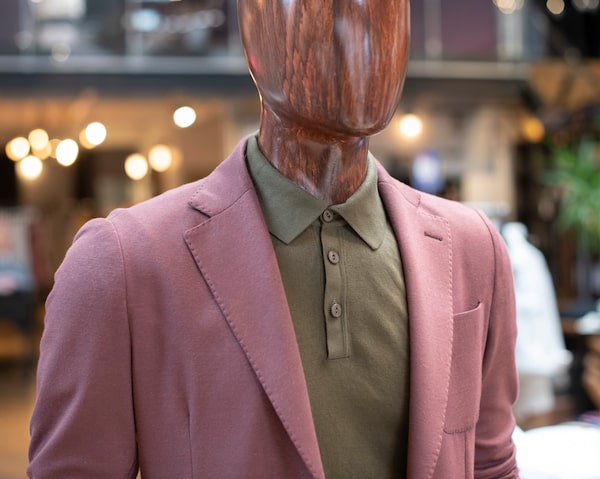
Jackets, shirts and ties are photographed at Toronto clothing store Gotstyle, on July 7, 2021.Fred Lum/The Globe and Mail
Gus Carlson is a U.S.-based columnist for The Globe and Mail.
Peter Shier is the first to admit he’s neither a fancy guy nor a fashion maven. The former pro hockey player and owner of a Toronto creative agency likes to kick back at home in a pair of old jeans and a T-shirt – his favourite is a time-worn Bruce Springsteen relic.
But when he leaves the house, he ratchets up his look. It’s not about dressing formally, he says, it’s about having the self-awareness to dress differently in public than at home.
Increasingly, Mr. Shier, whose clients include The Globe and Mail, feels he’s one of the few who does so. In the streets, in malls and on subways, he is gobsmacked by what he calls the “slobification” of culture since the pandemic.
And as a business owner with a strong client-facing culture, Mr. Shier is keenly aware of the potential for what has become the norm on the streets to become the norm in offices as more companies impose back-to-the-office mandates. Even Zoom, the platform synonymous with remote work, said this week that it is calling employees back to the office on a hybrid schedule.
“Credibility is crucial,” Mr. Shier said. “You can come up with the smartest thinking in the world, but if you deliver it in a ratty old T-shirt or a baseball cap flipped backward, it doesn’t exactly scream, ‘Trust me, I know what I’m talking about.’”
It may sound quaintly old-school, and perhaps more relevant to Mr. Shier’s business than to others, but he’s right. And if you’ve heard the expression “read the room,” you’ll know why it’s important to understand the sensibilities of someone you are asking to buy your products or services or invest in your company. To make a market, you need a buyer and a seller, but trust facilitates the deal. And how you present yourself forms a great part of that.
Mr. Shier is not alone in his concern that trust is a potential casualty as traditional corporate sensibilities collide with the fashion trend called “slob-chic,” featuring comfort-first clothing that became de rigueur during the remote-work era.
If you were a business owner in the late 1980s and early 1990s, you may remember the anxiety around the advent of casual Fridays.
Even in those early days, business casual didn’t mean the current atrocities of cargo shorts and Megadeth tank tops. Yet many companies, particularly in financial services, were still reluctant to move to casual dress for their client-facing workers. That was sensible.
But during the dot-com era, many businesses moved to all casual, all the time. Along with climbing walls, nap rooms and doggie relief areas, dot-com offices were environments where shorts and flip-flops were acceptable – even encouraged.
The casualization of the workplace evolved over the next two decades, with more businesses relaxing rules. With the pandemic, it dropped off a cliff, as casual became sloppy and the lines blurred between the workplace and everywhere else.
Now, the challenges of going from business casual to business Bohemian and back are testing everyone, including those responsible for clothing us.
Tim Ceci, a New York City-based retail analyst and principal consultant for Point B management consulting, says the return to the office will take time and appropriate attire will vary by industry. During this transition, retailers must keep their marketing and merchandising strategies ahead of the rapidly changing paradigms of acceptability in the workplace and must make the customer experience seamless across multiple channels.
Ultimately, though, people need to have some self-awareness about what looks decent and remember the rationale against business casual in the nineties in financial services: the belief that even smart casual clothing reflected casual thinking – not an ideal professional posture when managing people’s money.
Or hear what Mr. Shier has to say about this new slobification he sees – sloppy sweatpants, ripped T-shirts and any number of footwear styles, from Crocs to Birkenstocks to fuzzy slippers, all worn with socks.
“I just can’t understand how some people get dressed in the morning, look at themselves in the mirror and say, ‘Yup, I’m looking good today,’ and then head out,” he said.
“I’m not sure if it’s a result of being stuck at home for two years and no one able to see what you’re wearing, but it makes me nuts. And by the way, we can see you now!”